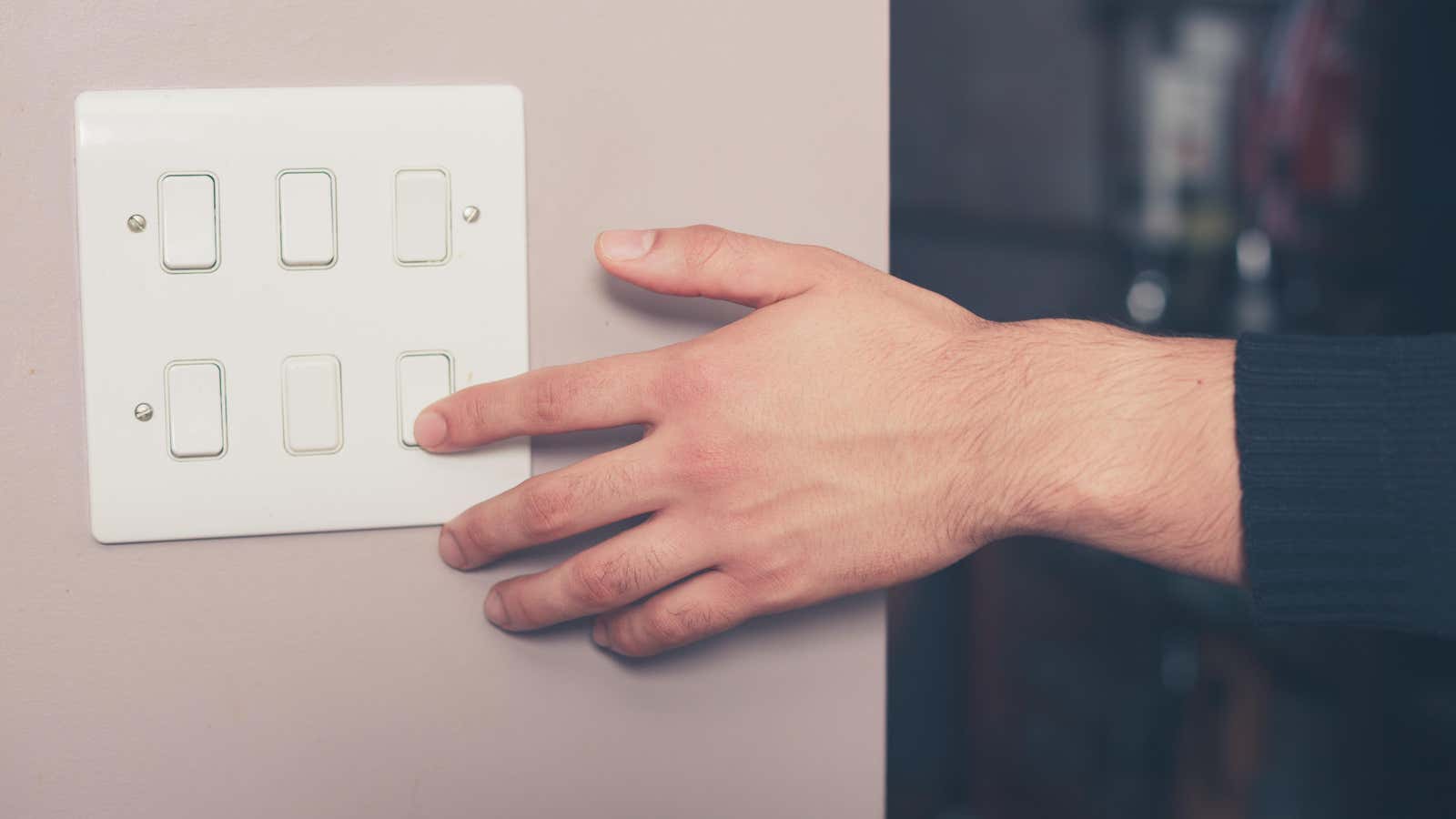How Much Money Can Turning Off the Lights Really Save You?

We are officially entering a period of collective belt-tightening as the economy goes through some hardships . Everything suddenly seems more expensive, wages are not exactly skyrocketing across the board, and old money-saving methods spring from deep within our memories. But what if you’ve cut all corners and still want to save a few more dollars? One of the classic frugality tips is to turn off lights you don’t use. On the one hand, it seems obvious: you pay for electricity , so it makes sense to turn things off when you’re not using them. On the other hand, turning the lights off all the time can be inconvenient, and the main reason we switched to these fancy new light bulbs in the first place is because they need to be more energy efficient. Will walking around a dark house like it’s the 19th century save you enough money to make it worth it?
The answer is… complex. Let’s see how much money you can save by turning off the lights.
You have to do some math
So, we’ll have to process some numbers the old fashioned way. First, you need to collect two numbers: the wattage of your light bulb and the price you pay for electricity. The first is listed somewhere on the light bulb itself or on the package it comes in. Next, you need to convert those watts to kilowatt hours (kWh). For example, if the light bulb is 13 watts, multiply the wattage (13) by the number of hours it has been on, then divide by 1000. So, if your light bulb has been on for one hour while you are doing math, your equation will look like this:
(13 * 1) / 1000 = 0.013 kWh
Yay, math! Now look at your electricity bill and find out how much you are paying for each kilowatt hour of electricity you get from the grid. You can find some sample electricity bills here if you need help finding this information. Multiply your tariff by the amount of kWh you just calculated. Let’s say you pay 10 cents for a kilowatt-hour of electricity. Turning on this bulb for one hour costs you 0.0013 cents – yes, much less than a penny. If you pay 20 cents per kWh, you pay 0.0026 cents.
It’s not big money. If you’re wondering, at 10 cents per kWh, if you leave this light bulb on for 24 hours straight, you’ll only cost 3 cents. Obviously, less efficient lamps will cost more. For example, a 100-watt old-school incandescent bulb will cost you a cent to leave on for 24 hours straight.
It’s still not exactly a fortune, but let’s look at your situation as a whole. How many light bulbs do you leave burning each day and for how long? Let’s say you have 10 light bulbs in your house that you usually leave on for eight hours when it gets dark. Let’s also say that half is nine watts and half is 13 watts, and you pay 10 cents per kWh.
(13 * 8) / 1000 = 0.104 kWh which is $0.0104 per day x 5 = $0.052.
(9 * 8) / 1000 = 0.072 kWh which is $0.0072 per day x 5 = $0.036.
So, you spend about 9 cents a day lighting your home. Now, assuming you do this 50 weeks a year (we’ll ignore things like daylight saving time), you’re spending about $31 running these lights annually. Is it worth it to run, turning them off?
You may wonder if cost matters when you have to replace all those light bulbs you use eight hours a day. While it is true that constantly running LED bulbs shorten their lifespan, they tend to last for years even with constant use. Your cost to replace these bulbs will be minimal, especially since you can buy LED bulbs for just over a dollar apiece .
Other Considerations for Your Lighting Costs
Here are a few more things to consider when saving energy and money with light bulb controls:
CFL: While the math for compact fluorescent lamps (CFLs) is the same, their different design means they react differently when turned on and off. Turning the CFL lamp on and off frequently can significantly shorten its life. The rule of thumb is 15 minutes – if you need the light again after 15 minutes or less, just leave it on. If you are going to leave it off for more than 15 minutes, turn it off.
Incandescent bulbs: This shows how smart it is to move away from these classic incandescent bulbs, as even the lowest wattage you’ll typically find in the home, 40 watts, will cost you roughly $112 a year if you use 10 of them for eight hours in a day.
Bottom line: You can save some money by turning off the lights, but not much. Whether it’s worth it depends entirely on how badly you need every dollar.